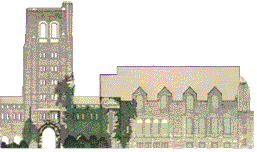 liibulletin-patent |
Georgia-Pacific Corp. v. United States Gypsum Co., No. 97-1238, 1999 WL 988547 (Fed. Cir. Nov. 1, 1999)
DOUBLE PATENTING - OBVIOUSNESS - WILLFUL INFRINGEMENT - LITERAL INFRINGEMENT- CLAIM CONSTRUCTION
ISSUE & DISPOSITION
Issue(s)
1. Whether a patent is invalid when it is merely an obvious variation of an invention disclosed and claimed in an earlier patent by the same inventor.
2. Whether a claim term can be given a different meaning in the various claims on the same patent where the patentee does not expressly provide for such.
Disposition
1. Yes. Minor linguistic differences do not serve to distinguish two claims, and where these differences are not sufficient to render the claims patentably distinct, the patent in question is invalid for obviousness-type double patenting.
2. No. Claim terms found in different claims must be interpreted consistently unless the patentee specifies different meanings, and interpretation of a disputed claim term requires reference to the other claims as well as the specification. When intrinsic evidence is unambiguous, it is improper for the court to rely on extrinsic evidence to contradict the meaning of the claims.
SUMMARY
Georgia-Pacific owns U.S. Patents Nos. 4,647,496 ('496 patent), 5,319,900 ('900 patent), and 5,371,989 ('989 patent) relating to glass and fiberglass mat-reinforced gypsum boards and the use of such boards in exterior insulation systems. The United States District Court for the District of Delaware held that United States Gypsum (USG) infringed several claims of the '496, '900, and '989 patents, and granted USG a new trial on the issue of infringement of the remaining claims.
USG contended that the '989 patent was invalid for obviousness-type double patenting over the claims of the '496 patent and U.S. Patent No. 4,810,569 ('569 patent). The Federal Circuit reviewed double patenting de novo. The Court identified that double patenting is a matter of what is claimed, and therefore requires claim construction. The Court stated that minor linguistic differences do not distinguish two claims, and where these differences are not sufficient to render the claims patentably distinct, the patent in question is invalid for obviousness-type double patenting. The Court held that several claims on the '989 patent are invalid under this reasoning and vacated the infringement ruling on that patent.
USG also contended that the asserted claims of the patents at issue were invalid due to obviousness. Reviewing the district court's denial of judgment as a matter of law on this issue, the Federal Circuit upheld the holding of non-obviousness, stating that USG failed to prove obviousness by clear and convincing evidence.
With respect to the literal infringement claim, the Court reviewed the lower court's determination using a two-step analysis. First, it properly constructed the asserted claim, and second, it determined whether the properly construed claim read on the accused patent. The Federal Circuit held that claim terms found in different claims must be interpreted consistently if the patentee does not expressly provide otherwise. The interpretation of a disputed claim term requires reference to the other claims in the patent as well as the specification. When intrinsic evidence is unambiguous, it is improper for the court to rely on extrinsic evidence to contradict the meaning of the claims. The Federal Circuit found that the district court erred by construing the word "sandwich" to mean one thing in the claim and another throughout the rest of the patent claims. The Federal Circuit held that the definition of "sandwich" in the claim should match the definition throughout. The Court also found that USG infringed the '496 patent under this interpretation. The Court therefore reversed the trial court's grant of a new trial and reinstated the jury's finding of infringement.
Lastly, the Federal Circuit upheld the district court's holding that USG did not willfully infringe, stating that a finding that infringement was not willful will be sustained unless the reviewing court has a definite and firm conviction that the trier of fact erred.
Prepared by the liibulletin-patent Editorial Board.
